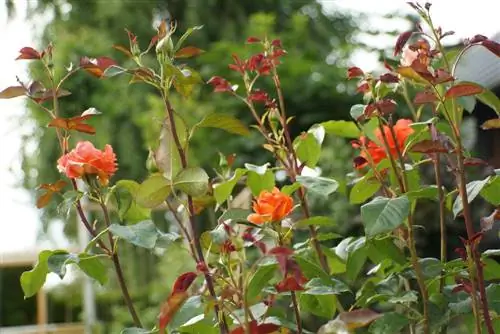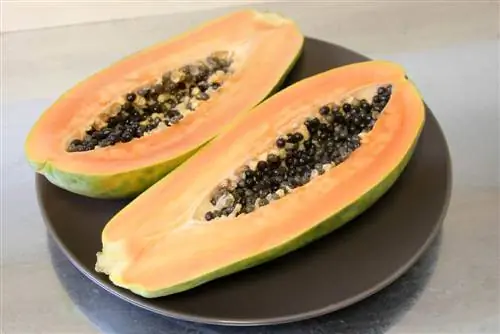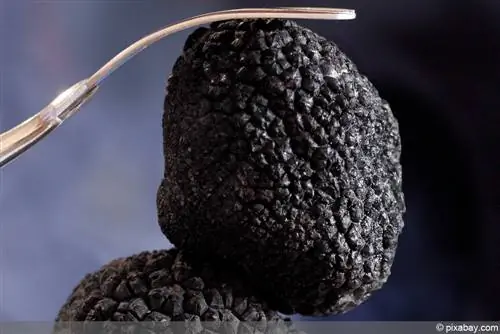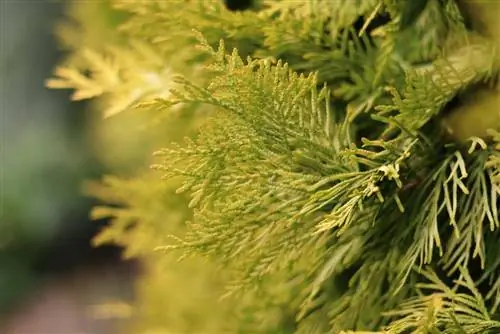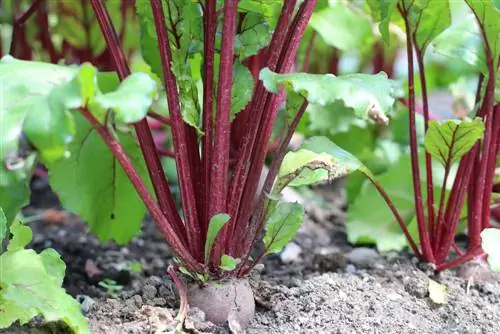- Author admin [email protected].
- Public 2023-12-17 03:39.
- Last modified 2025-01-24 12:45.
Hydrangeas are colorful flowering shrubs that can grow sprawling in width and height. If it takes up too much space and bothers its neighbors, then the shrub needs to be transplanted. Otherwise, damage to surrounding buildings, walls and plants will quickly occur, and the hydrangea will no longer be able to develop evenly and will not form beautiful proportions. When transplanting, the right time and a carefully considered choice of location are important so that the flowering shrub can grow quickly again.
hydrangeas
Hydrangeas can be cultivated as potted and container plants as well as planted out in the garden. The flowering shrubs develop their flower color depending on the pH value of the soil in which they grow. If a certain flower color is preferred, the pH value must be adjusted accordingly. Transplanting hydrangeas is generally possible, but this process requires careful planning so that the plant feels comfortable in its new location and grows quickly again:
- Form compact root ball, which ends in countless small fibrous roots
- Root ball is slightly smaller than the above-ground shrub
- Roots should never dry out completely, but they also cannot tolerate waterlogging
- Shrub does not tolerate midday heat or blazing sun
- Lush and large flowers, very showy
- Colours vary from white, creamy white to purple, red, pink and blue
- Inflorescence is predominantly formed as large and round umbels
- Flowering in summer, from June to August
- Difference between deciduous and evergreen varieties
New location
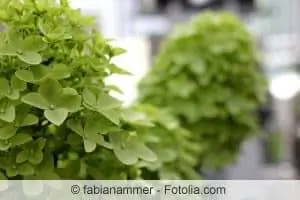
The new location must be chosen carefully so that the hydrangeas can feel comfortable at all times and they grow promptly after being transplanted. The pH value of the soil is very important and should be determined before planting. If the pH values are too high, so-called chlorosis can occur in the plants, in which the leaves turn an unsightly shade of yellow. The following criteria should be taken into account when selecting a new location:
- Make sure there is enough space
- Avoid sensitive plant neighbors
- Shady to semi-shady locations are ideal
- Need places protected from wind and weather
- Prefer slightly acidic, permeable and nutrient-rich soils
- Optimal pH value is between 4.5 and 6.5
- Depending on the variety, they also tolerate alkaline soils
- If the pH value is too high (well above 7.5), try to lower it
- Special test strips help determine the pH value
Tip:
So that the hydrangeas can thrive ideally, locations under higher-growing trees are ideal, as they provide plenty of shade, especially during the hot midday period.
Time
The right time is crucial when transplanting, otherwise the hydrangea can be damaged or only grow poorly. The summer months are definitely unsuitable, as the plant is in full bloom during this time and needs all its strength to bloom. That's why it's better to wait until the hydrangea has completely faded or is about to bloom:
- Autumn is the best time for transplanting, following flowering
- Alternatively, spring is also possible, but before budding
- A mild winter may also be suitable
- No frosty temperatures should be expected after transplanting
- Frost often leads to frostbite after moving
Unearth
When digging, you must always exercise caution so as not to unnecessarily injure the hydrangea and its root ball. If injuries occur, the plant will be weakened too much and will not cope with the move particularly well. If the transplanting takes place during the dormant growing season, the shrub can be cut back by a good third of its size. In this way, the action can be significantly simplified. The following criteria should be observed when excavating:
- Make a trench in a ring, not too close to the bush
- Reveal the root ball step by step as extensively as possible
- Dig up the hydrangea over a large area without damaging the root ball
- Fine roots should be preserved if possible
- Don't remove the plant until the entire root is completely exposed
- Lift the bush slightly from time to time to check the condition
- For larger specimens, place sturdy foil on the side of the root ball
- Unearthed plant can be placed on top for easy transportation
- Wrap the root ball well in the foil so that a lot of soil remains on it
- Very large plants are extremely heavy and a second person is often needed to carry them
- Use a wheelbarrow or car trailer for transport
Transplanting
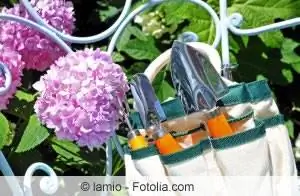
In some cases it is urgent to transplant a hydrangea, especially if the plant has grown much larger than previously thought. Transplanting is also necessary if the current site conditions are not suitable for the hydrangea or the location in question is needed for other plants. At this point, the plant should also be cut back a little to remove large areas of dead plant parts. Planting the hydrangea in its new location must be carried out just as carefully as digging it up so that it can feel comfortable straight away and grow quickly. The following procedure has proven successful when transplanting:
- First dig a hole in the new location into which the hydrangea is to be transplanted
- Make the planting hole generous, there must be room for the entire root ball
- Fill the hole with some water
- Place the hydrangea in the hole, align it straight and fill with plenty of loose soil
- Make sure the soil is nutritious and rich in humus; if there is a shortage, get it from a specialist retailer
- Then add additional water
- Ensure sufficient watering after transplanting
- Watering more in extremely dry and hot weather conditions
Tip:
If the hydrangea is transplanted during a particularly hot period of weather, an additional source of shade is very helpful when growing so that the sensitized plant does not burn from the strong rays of the sun.
Share
With extremely large specimens, it may happen that there is no suitable location for the hydrangea in a smaller garden. In this case, the plant can be divided and moved to various locations or cultivated in a pot or bucket. Due to the division, the chances that at least one of the new specimens will develop splendidly in the newly planned location also increase. The following aspects should be taken into account when sharing:
- Divide the hydrangea after digging up the root ball
- Carefully saw through the compact center piece with a sharp saw
- Sprinkle cut surfaces with charcoal ash as a precaution to prevent infections
- In this way, 2 to 3 smaller bushes are created from a large hydrangea
- Either plant in the garden or prepare for container storage
Conclusion
Hydrangeas can generally be transplanted well if the move is carried out in the fall after flowering has stopped. Alternatively, a mild winter or the beginning of spring before budding is also possible for transplanting. When selecting the new location, shady and windless places should be preferred, with sufficient space for the shrub's future growth. The soil should have a slightly acidic pH value; if this is not the case, it must be prepared accordingly. If the plant has to adapt to completely new location conditions, the move will be unnecessarily difficult. When digging, it is crucial to proceed carefully and over a large area so that the fine fibrous roots are not injured. Large specimens have a high weight, which can be reduced by pruning them beforehand. Transport can be made easier with a foil; ideally a second pair of hands can help. In a generously sized planting hole, the hydrangea can feel right at home and grow quickly again, with regular watering sessions playing an important role.


